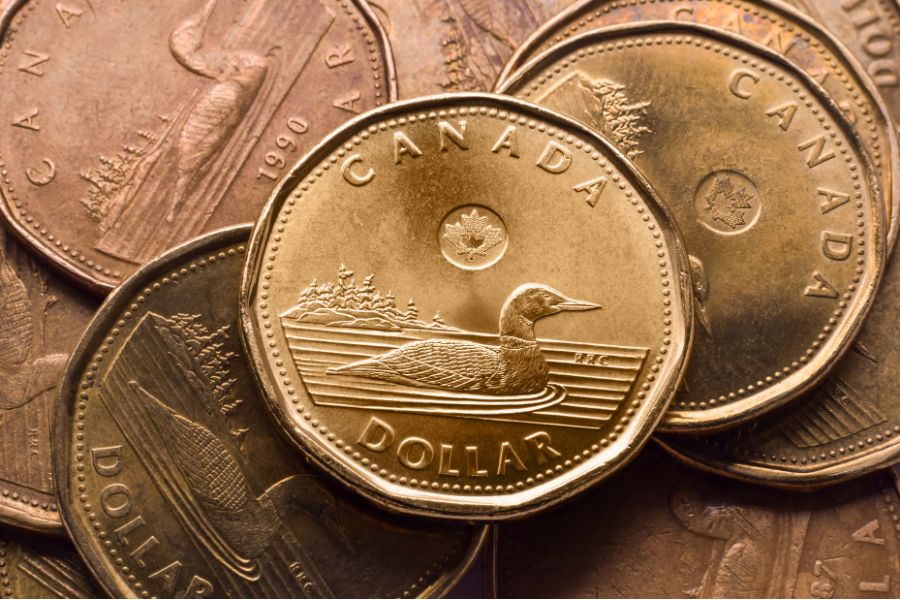How trade policy & interest rates are shaping the CAD in 2025
Significant forces, including trade, interest rates and political volatility, are shaping the CAD in 2025
THE POLITICAL, ECONOMIC, and trade landscapes in Canada and globally have been chaotic. We’ve seen dramatic changes, and they’re hitting close to home. This isn’t just some theory playing out in policy briefs; it’s showing up in real ways that every Canadian can feel. Over the past few months, the Canadian dollar has been anything but stable, especially against the U.S. dollar. In fact, on 31st of January, 2025, the loonie hit a 22-year low, falling to about CAD 1.47 per US$1 (or USD 0.68) as markets reacted to fresh U.S. tariff threats. This article explains how trade policy and interest rates are shaping the CAD in 2025, why it matters, and how investors and consumers in places like London, Ontario, and across the country are navigating the fallout.
Why Businesses, Consumers, & Investors Are Closely Watching Currency Movements in 2025
More Canadians are paying attention to how the CAD is fairing globally, and for good reason. When the CAD drops, the impact doesn’t just live in headlines; it tends to hit on different levels. For everyday people, a weaker loonie makes everyday items that happen to be imported (say electronics, clothing, and food) more expensive. For businesses that rely on USD-priced machinery, fuel, or parts, a shaky CAD means higher input costs and/or tighter margins. So, it makes sense that news of currency shifts don’t go unnoticed in 2025, because a value change in the Canadian dollar can translate to a considerable loss.
Investors are also paying very close attention to the movements of the loonie, treating it as a readout on the country’s economic health. Generally, CAD movements reflect deeper trends like interest rate gaps, trade pressure, commodity prices, and market sentiment. Retail traders are a big part of this narrative. Many rely on tools like a CFD broker to speculate on USD/CAD moves, especially around policy shifts or rate announcements. That adds even more volatility to short-term swings.

Domestic Drivers: Interest Rates, Inflation, and Fiscal Policy
Of course, Canada’s domestic economy and policy play a significant role in where its currency is headed. For context, after inflation peaked above 8% in 2022, the Bank of Canada went into tightening mode. The bank raised interest rates aggressively to cool the economy, and it worked (at least on paper). And by April 2025, headline inflation had dropped to 1.7%, way below the Bank of Canada’s 2% target. However, that’s not the whole story. CPI-trimmed mean is sitting at 3.1% (as of April 2025). Simply put, the price pressures haven’t been fully tamed, and there’s still tension between the appearance of disinflation and the reality of high costs in areas like housing, services, and essentials.
In response, the BoC has been cutting rates (cautiously). The overnight rate dropped from 5.00% in late 2023 to 2.75% by April 2025, with seven straight cuts since June 2024. But as of April, the central bank paused. Why? The U.S. “reciprocal” tariffs and slowing global trade have introduced fresh uncertainty.
While less of a driving force, fiscal policy still plays a supporting role. Currently, the federal government is running a moderate deficit, and recent tax changes, like scrapping the carbon tax and ending the GST/HST holiday, have contributed to cooling inflation and strengthening the loonie. However, without a new stimulus, fiscal policy is effectively neutral.
Global Influences
Economically, what happens outside Canada often hits harder than at home. Right now, U.S. monetary policy is a major driver of the CAD. How? Rate differentials. While the Bank of Canada has been cutting consistently, the Fed is holding steady. The stubborn U.S. inflation has kept Fed funds between 4.5% and 5%, while BoC rates are expected to end the year around 2.5–3%. That widening gap makes U.S. assets more attractive, which pushes the U.S. dollar higher, and consequently drags on the CAD.
Then there’s trade. The new U.S. administration’s 2025 tariff blitz shook markets. Canada hit back with counter-tariffs and rolled out relief for the hardest-hit sectors. These tit-for-tat moves have cranked up uncertainty. The BoC has pointed out that the friction is lifting inflation expectations and muddying the outlook. Additionally, commodity prices are falling, especially when it comes to oil, Canada’s most valuable export. Brent crude averaged about $68 in April, and experts expect prices to keep falling to around $62 year-end, since global supply is growing faster than demand. That’s not-so-great news for the CAD. Why? Well, Lower oil demand = weaker export revenues = a softer CAD.
Investor Behavior and Currency Markets in 2025
The currency markets in 2025 have been more liquid and volatile than usual, and investors aren’t sitting still, especially CFD traders and other retail investors. Every bit of economic data (from inflation prints to weak jobs numbers) triggers snap reactions in USD/CAD. Trading volumes jumped 13% in April after the U.S. tariff shock, with retail and institutional players piling in.
Leveraged CFD traders, in particular, have been chasing the volatility, treating it as a high-risk, high-reward setup. Momentum trading, carry-trade unwinds, and big short-CAD positions have all added to the swings, mostly playing off the Fed-BoC rate gap. An AI auto trading bot can analyze market data, identify opportunities, and execute trades automatically with minimal human input.
Even a minor policy hint or one hot U.S. data point can spark sharp intraday moves. And it’s not just macro news, risk sentiment is driving flows too. When global markets are in risk-on mode, CAD tends to rise with other commodity currencies. When risk is off, the loonie drops. For this reason, corporate treasurers and investors have been hedging more aggressively or sitting on cash since the tariff noise kicked off.

What Could Move the CAD Next?
Plenty of risk still exists for the Canadian dollar. Central banks are front and center: if the BoC cuts deeper than expected or the Fed holds firm, USD/CAD could swing sharply. With rate differentials driving the bulk of movement, even a tone shift from either side can move the CAD a full percentage point.
Trade is the next wildcard. Any breakthrough, like the U.S. dropping tariffs (entirely) or striking a new deal, could jolt the CAD.
Conversely, more tension or retaliation could push it lower, fast. Then there’s oil and other commodities. A price shock from OPEC action or geopolitical chaos could lift the loonie, but further declines would drag it. And don’t forget economic data, surprise inflation, GDP growth, or jobs numbers (from either side of the border) can change rate expectations overnight. In this environment, no data point is too small to matter.
The Forces Behind CAD’s Movement
Significant forces, including trade, interest rates, and political volatility, are shaping the CAD’s path in 2025. The combination of these, playing out in real time, has investors, businesses, and households watching more closely than ever. With so much riding on small shifts, staying alert to policy moves and global sentiment is essential.

